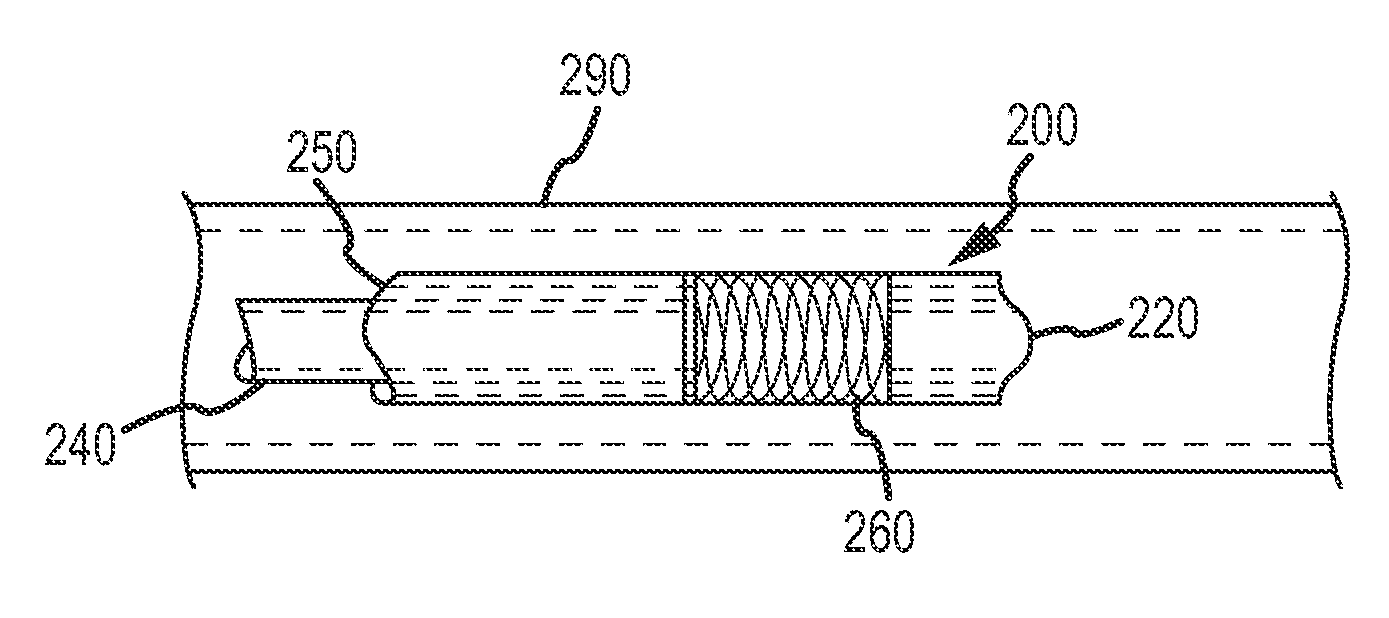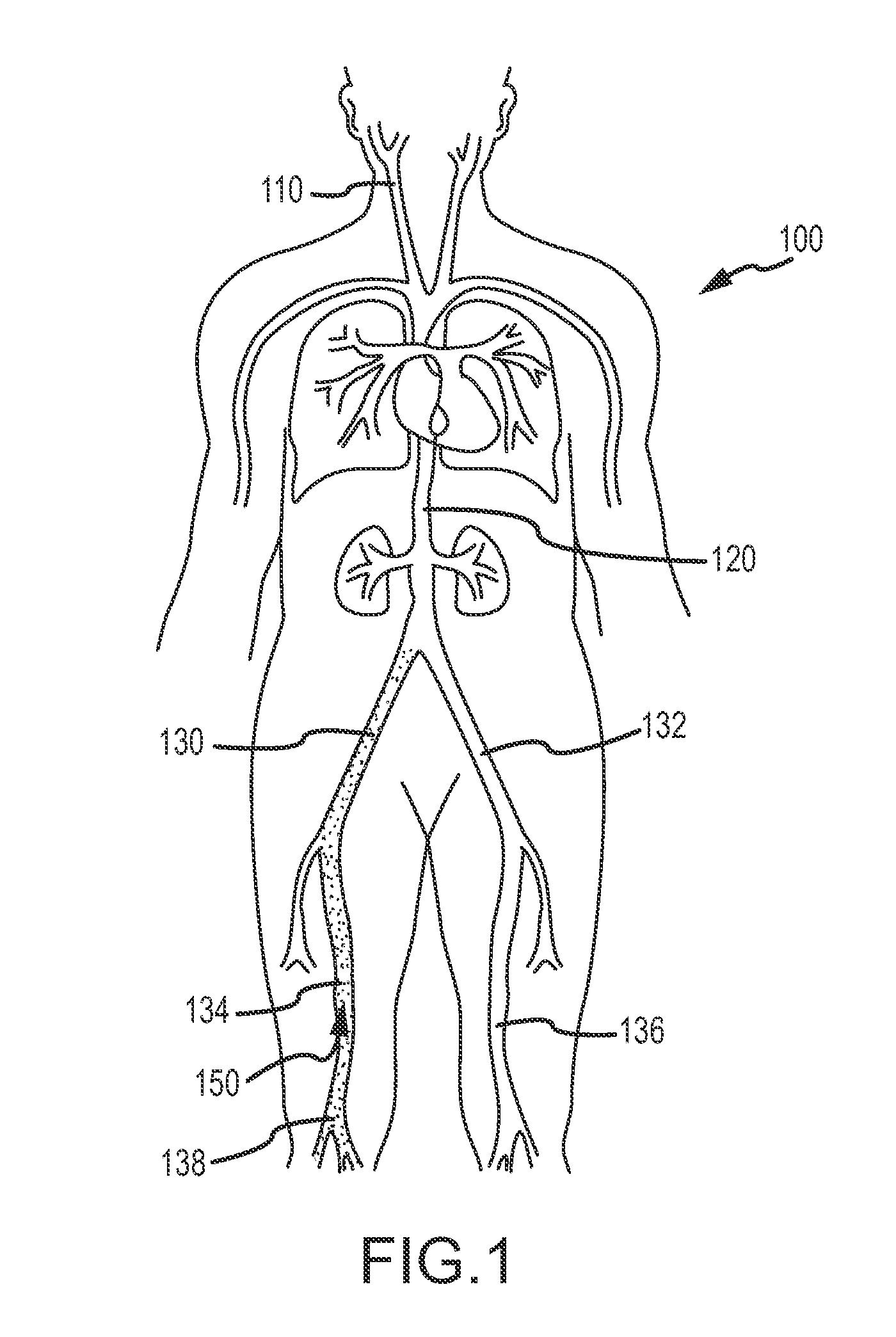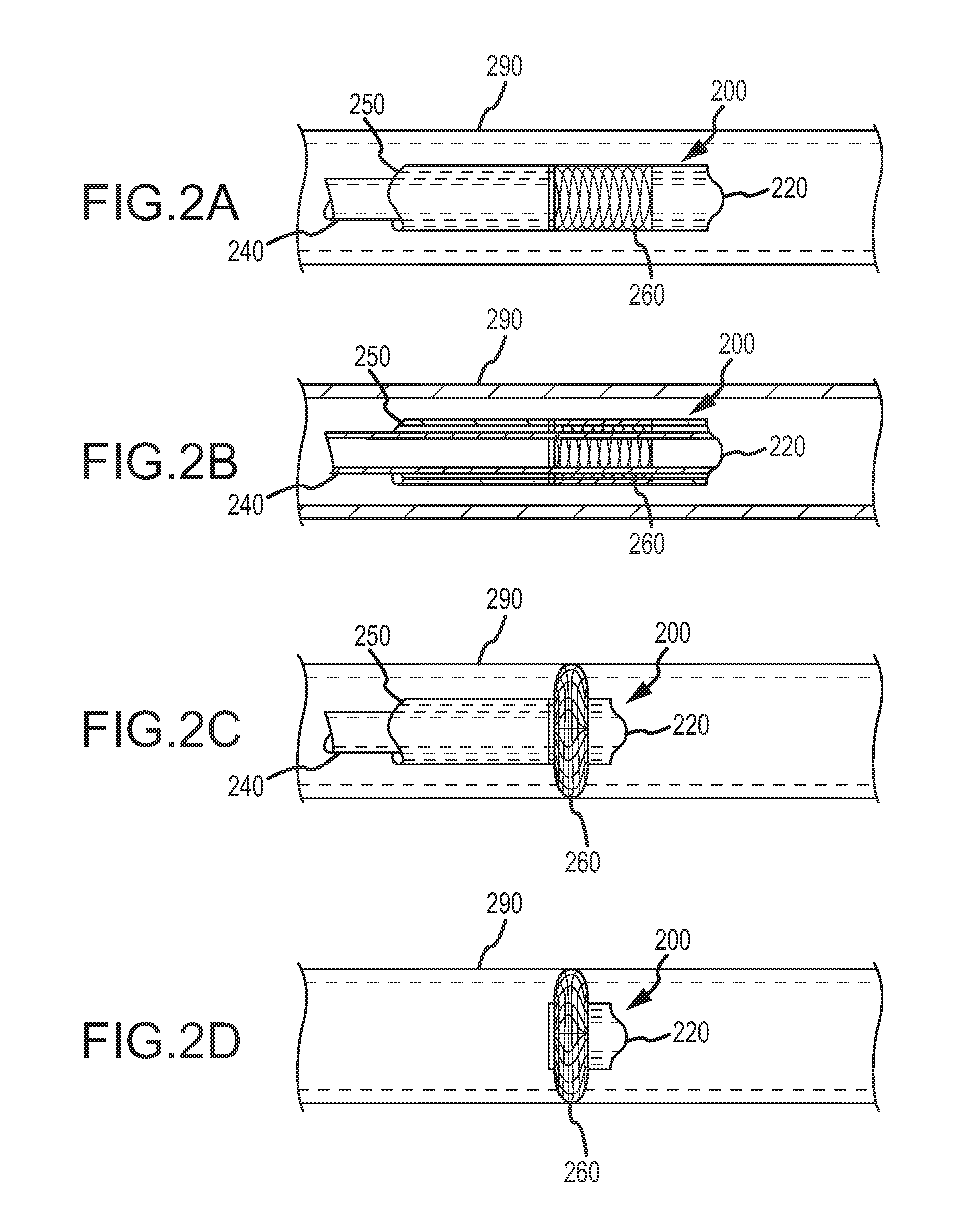These patients are constantly at risk of a clot breaking free and traveling via the
inferior vena cava to the heart and lungs.
Pulmonary
embolization can frequently be fatal, for example when a large blood clot interferes with the life-sustaining pumping action of the heart.
If a blood clot passes through the heart, it will be pumped into the lungs and may cause a blockage in the pulmonary arteries.
A blockage of this type in the lungs will interfere with the
oxygenation of the blood causing shock or death.
Recurrent DVT will affect a large percentage of those who suffer from the initial episode, further compounding the problem.
Therefore, millions of patients will suffer from the acute and chronic problems and health risks posed by DVT.
In addition to forming in the natural vasculature,
thrombosis is a serious problem in “artificial” blood vessels, particularly in
peripheral femoral-popliteal and coronary
bypass grafts and
dialysis access grafts and fistulas.
Such sites of an anastomotic attachment are particularly susceptible to
thrombus formation due to narrowing caused by
intimal hyperplasia, and
thrombus formation at these sites is a frequent cause of failure of the implanted graft or
fistula.
The arterio-venous grafts and fistulas which are used for
dialysis access are significantly compromised by
thrombosis at the sites of anastomotic attachment and elsewhere.
The
venous valves are particularly affected by deep venous thrombosis and by the eventual cellular response which evolves into a tough and thickened tissue, and the valves become stiff and non-compliant causing them to become incompetent and allowing venous
reflux to develop.
The ongoing
reflux results in venous hypertension, dilated veins, and a plethora of symptoms, including swelling of the lower leg, heaviness, pain,
skin discoloration, and even
skin ulcers.
However, venous
reflux still occurs in some of these patients, probably the result of residual
thrombus on the valves after the majority of thrombus has been removed and the resulting cellular proliferation that ensues.
The cellular ingrowth is a complicated series of events resulting in
smooth muscle infiltration, collagen deposition, and
fibroblast proliferation, amongst other features that renders the
valve leaflet enlarged, stiff, and frequently fused to the vessel wall incapable of function or even being repaired.
The current methods of treating venous diseases including DVT and its complications, notably
pulmonary embolism and PTS, are much less than satisfactory for several reasons.
Heparin administration is convenient and fairly easily done, although it can be expensive.
The main problem with
Heparin administration, however, is that all of the clot does not dissolve or it does not dissolve very quickly, and there is
resultant residual clot and damage to the
venous valves which will lead to PTS.
While this method was partially successful, the incidence of bleeding intracranially and in the gastrointestinal (GI) tract was unacceptable.
This worked, but the bleeding complications prevented widespread adoption.
Again, the bleeding complications were a deterrent to use and even the mechanical action along with the lytic
drug did not remove all of the thrombus in most cases.
These devices, however, are expensive and carry some risk to the patient, including bleeding, and are frequently not successful in removing all of the thrombus.
This sometimes necessitates continuing the lytic therapy overnight or for several days in the
intensive care unit which is expensive and adds the extra risk of systemic
exposure to the lytic agent with subsequent bleeding.
Hence, the added cost of the
drug and the ICU monitoring and the added risk of protracted
exposure to higher levels of the lytic
drug is not only problematic to those patients treated in this manner, but they are also a deterrent to other patients even having the procedure which may help them avoid the long term sequelae of aggressive
interventional therapy for DVT.
The main reason for subjecting the patient to the additional expense and risk of protracted lytic infusion is that the thrombolytic and thrombectomy devices designed to treat the thrombus within the veins do not remove all of the thrombus.
Therefore the treating physicians really don't know or have the means to determine if the thrombolytic and thrombectomy devices available to them will work or not.
This unknown is a deterrent for using an invasive, potentially dangerous, and very expensive method that may help the patient, but may not.
This unknown prevents many patients from receiving aggressive therapy that may be beneficial to them.
Both the lack of success of the prior art devices and the fact that many patients are not treated because of this unknown leaves the patient with residual thrombus which demands further costly treatment methods and increases the risk of valvular damage which predisposes the patient to develop recurrent DVT,
chronic venous insufficiency and PTS later.
Because the portions of the filter contacting the
blood vessel wall become fixed in this way, it is impractical to remove many prior art filters percutaneously after they have been in place for more than two weeks.
A loose thrombus filter is undesirable because it may migrate to a dangerous or life threatening position.
Although vascular filters are widely used for capturing emboli in blood vessels, existing filter configurations suffer from a variety of shortcomings that limit their effectiveness.
In one shortcoming, vascular filters are susceptible to clogging with embolic material.
When this occurs, serious complications can arise and therefore the patient must be treated immediately to restore adequate
blood flow.
Because of the potential for clogging, existing vascular filters are typically manufactured with relatively large pores or gaps such that only large emboli, such as those with diameters of 7 mm or greater, are captured.
Unfortunately, in certain cases, the passage of smaller emboli may still be capable of causing a
pulmonary embolism or
stroke.
However, one important problem with many available intravascular filters in use is the non-retrievability of the devices, because while penetration of the retaining hooks of the filter into the lumen of the IVC is necessary for the proper securing of the device, in extreme cases and over time, over-penetration may impinge upon adjacent organs, leading to serious or even fatal complications.
Further, with time the filter will be integrated into the
aortic wall, making it unretrievable without causing significant damage to the vessel wall, particularly at the body of the basket.
However, the lock device prevents the second connector from returning from the second
proximate position back to the first remote position.
At the outside ends, the filaments are formed into outwardly extending hooks backed by offsets, the latter limiting the penetration of the hooks into the wall of a passageway in which the device is implanted.
However, the Dubrul I device is designed for use against
blood flow with the most open end on the proximal end and not optimized for use with blood flow with the most open end on the distal end.
The prior art thrombus filter techniques or technologies do not provide a minimal-trauma device that enables predictable and reliable positioning, readily allow re-positioning, are easily inserted and retracted, capable of removing all thrombus, including subacute and chronic thrombus.
Also, traditional thrombus filters techniques or technologies do not allow pulling or moving of thrombus and / or shredding thrombus.
While more aggressive thrombectomy procedures employing rotating blades can be very effective at thrombus removal, they present a
significant risk of injury to the
blood vessel wall.
Alternatively, those which rely primarily on
vacuum extraction, together with minimum disruption of the thrombus, often fail to achieve sufficient thrombus removal.
When valves fail, blood can
pool in the lower legs, resulting in swelling and ulcers of the leg.
The presence of CVI results from damaged (incompetent) one-way
vein valves in leg veins.
However, incompetent valves allow reflux of blood, causing clinical problems.
There are few effective clinical therapies for treating CVI other than
compression stockings and elevating the leg.
However, it is often difficult to find suitable donor valves.
Very few prosthetic valves developed in the past have demonstrated sufficient clinical or mechanical functionality.
Persistent problems include thrombus formation, leaking valves, and valves that do not open at physiologic pressure gradient.
While various designs have been pursued in the past, many such designs possess shortcomings that prevent them from being a sufficiently
functional design.
Techniques for both repairing and replacing the valves exist, but are tedious and require invasive
surgical procedures.
Prosthetic valves can be transplanted into the venous
system, but current devices are not successful enough to see widespread usage.
One reason for this is the very high percentage of prosthetic valves reported with leaflet functional failures.
With time, these collateral channels may become large enough to permit life threatening emboli to pass to the
lung.
While the device acts as an efficient filter, approximately 60% of patients using the Mobin-Uddin filter develop
occlusion of the
inferior vena cava, sometimes resulting in severe swelling of the legs.
Furthermore, instances of migration of the filter to the heart have been reported; such instances present a
high mortality risk.
However, this technique has been shown to significantly injure the
vein at the introduction site.
Sometimes it may not be possible to pass the
capsule from below through tortuous pelvic veins into the inferior
vena cava because of the inflexibility of the
capsule.
It is very difficult to deliver the filter in a manner that maintains the longitudinal axis of the filter centered along the longitudinal axis of the
vena cava.
A tilted filter has been shown to be less efficient at capturing blood clots.
Problems with the device include migration and demonstration invitro of filtering inefficiency.
The random nature of the filtering mesh makes it difficult to assess the overall
efficacy.
The use of the above devices can be cumbersome, time-consuming and expensive.
Furthermore, these devices do not adequately capture emboli in the blood or remove all thrombus, such as subacute and chronic thrombus.
In certain cases, these devices may actually produce emboli and cause a
stroke or PE.
These devices are difficult to position and, in the case of venous valves, unreliable and generally ineffective.
 Login to View More
Login to View More  Login to View More
Login to View More 


